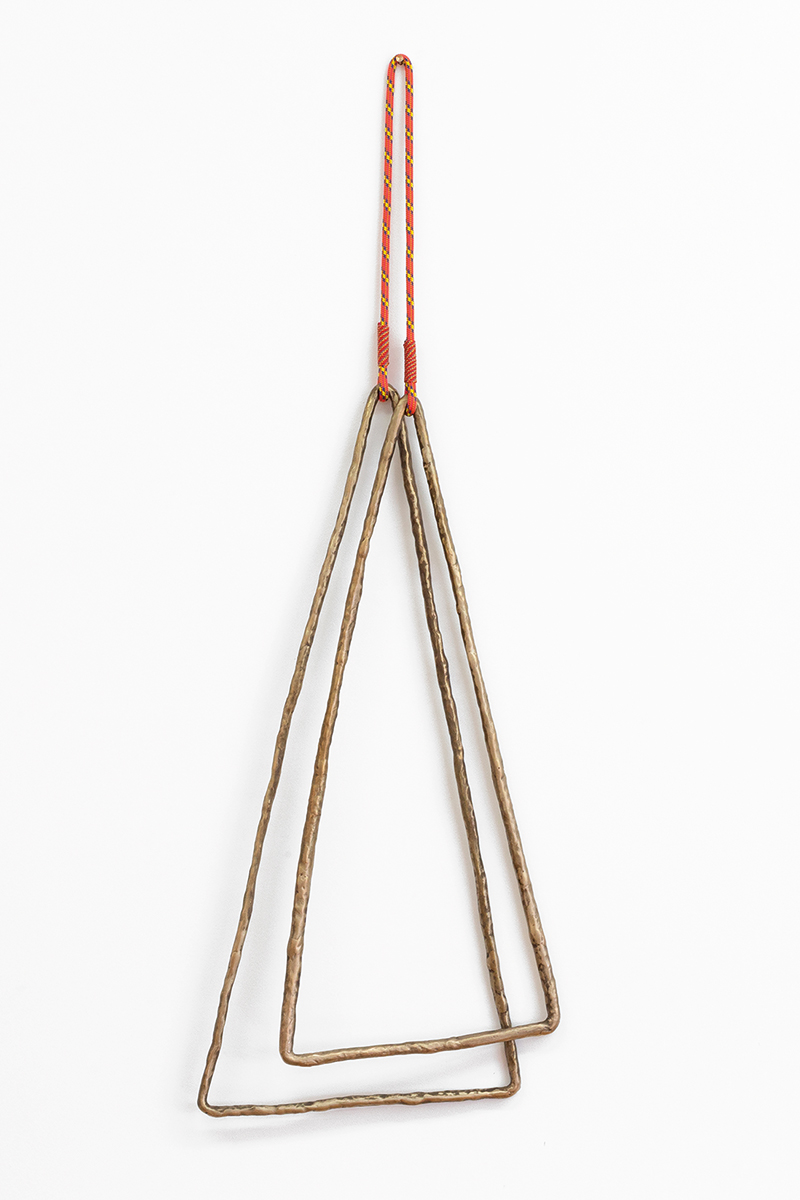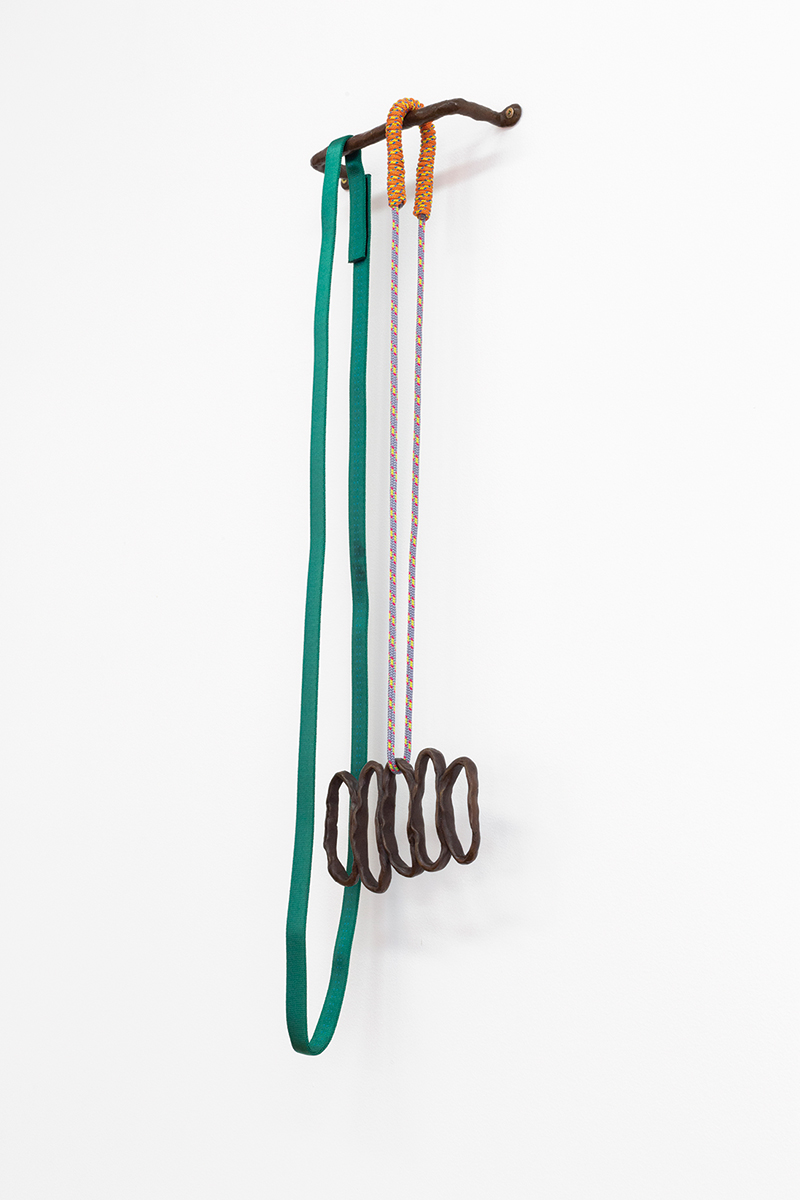Hannah Valentine lives and works across Tāmaki Makaurau and Tauranga. Her practice follows two distinct threads. The first is an interest in the body and tactile sensibilities.
If we’re being conditioned away from sensibility, towards consumerism, she questions how we might reinvigorate feeling and its importance in the way we interact with the world and each other. The second thread concerns our environment and impending climate crisis. Valentine’s wide-ranging practice takes form primarily in object and installation. Her work is pervaded by the human body and its various appendages and gestures. The artist brings together hand-moulded aspects with sourced materials like utilitarian climbing rope, the simplicity and precision of her careful compositions resulting in a tactile tension.
Valentine was the recipient of the Miles Supreme Award at Tauranga Art Gallery earlier this year. She has collaborated with luxury brand Deadly Ponies and shown her work as part of the Aotearoa Art Fair, as well as holding multiple private and public gallery exhibitions including exhibitions at Brick Bay Sculpture Trail.
Her solo exhibition Your body often knows more than you do opens 8 September at Page Galleries in Pōneke Wellington. Visit pagegalleries.co.nz.
You have an interest in the body and tactile sensibilities, how does this express itself through your art?
My work often references things that have a relationship to the body such as exercise equipment, jewellery or tools. I tend to work with soft malleable materials which are then cast, so my fingerprints and traces of my own body are often very evident in the work.
An element of your work deals with how people interact with the world. What do you consider the differences between sensibility and consumerism?
Thinking of sensibility as the way we interact with the world through touch, sight, smell, and so on, I’m interested in the way we’re conditioned to act according to impulses of economic forces. Our choice of cereal in the morning, the jacket we choose to put on or the soundtrack we listen to may be influenced by marketing strategies that condition us to want a certain thing, or to feel a certain way. I think this happens much more than we may like to let on or take account of. The French philosopher Bernard Stiegler claims that aesthetic conditioning can make people lose the ability to ‘feel’, and potentially, lose the ability to love themselves, leading to catastrophic events.
How do you personally tackle these dualities?
I tend not to think of them as a duality, but I’m very interested in the idea of ‘how much of yourself is for sale’. In the past I have used ‘marketing strategies’, bright set backdrops, or references to marketing via titles as an undercurrent, but the work itself is always very tactile. I like the idea that people would want to hold, wear, or use my work in some way. That feeling is at the forefront.

Above: Hannah Valentine, Anytime (advanced), 2021, cast bronze and Beal cord, 975mm x 315mm x 30mm. Image courtesy of the artist and Page Galleries. Photo: Cheska Brown.

Above: Hannah Valentine, Anytime (try us), 2021, cast bronze, Beal cord and tubular webbing, 625mm x 95mm x 70mm. Image courtesy of the artist and Page Galleries. Photo: Cheska Brown
How do you think your background has informed your practice?
I grew up playing sports, mostly soccer, later moving into Muay Thai, rockclimbing and surfing. Sports and generally being active have always been a big part of my world, which has undoubtedly influenced my interest in the body and physical interactions in space.
Climate change is upon us, what do you do as an artist to tackle this?
I try to be aware of it in all the decisions I make. There are lots of small things individuals can do, and I am by no means perfect, but trying to make good, informed decisions is always on my mind.
How are your environmental concerns expressed through your work?
In 2020, a lot of the reading and thinking I’d been doing revolved around climate change. I got really interested in some of the potential solutions or innovations people were making, particularly in relation to seaweed and marine permaculture, which offered some relief from the almost paralysing nature of the news. It resulted in an exhibition called Interference I held at Visions Gallery in Tāmaki Makaurau.
More recently, and perhaps because of Covid and the way it has made us reassess physical interactions and boundaries, my research has gone back to the body. I’m currently working towards an exhibition titled Your body often knows more than you do at Page Galleries, Pōneke, coming up in September.
What role do you think an artist has in society?
I think artists have an ability to highlight aspects of society, and make people feel or understand them in a different way. I’ve always liked the idea that artists can expand people’s understanding of what’s possible – thinking here in relation to artists I admire such as Katharina Grosse or Camille Henrot.
What has been a seminal experience that has informed your practice?
In my second year at art school, I went on a road trip to Pōneke with a group of friends and we saw an exhibition by Francis Upritchard, Karl Fritsch, and Martino Gamper at Hamish McKay Gallery. The space had a great feeling, and I remember thinking for the first time in that moment that I wanted to be an artist.
My work often references things that have a relationship to the body such as exercise equipment, jewellery or tools.
What other contemporary artists do you most identify with both here and abroad?
I love the work of Alicia Frankovich. Isa Genzken, Camille Henrot and Katharina Grosse as mentioned earlier, Franz Erhard Walther. I have lots of artists I admire, though my work is nothing alike. I recently watched a fantastic lecture series by Laurie Anderson I would highly recommend.
What other jobs have you done/do you do, other than being an artist to sustain yourself and how do you think that impacts – positively or negatively – your practice?
I work remotely a couple of days a week for Gow Langsford Gallery, who are wonderful. It’s rewarding to work with other artists and stay connected to the artworld in multiple ways. Beyond that my time is mostly spent running around after our 18-month-old son, and making art.
Professionally, what’s your goal?
To create large public work that becomes part of people’s everyday consciousness. To be respected by my peers. To exhibit at La Biennale di Venezia.
Interviewed by — Aimée Ralfini






